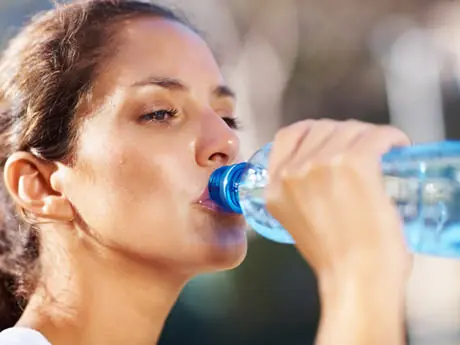No matter how many pills you pop, you won't get all your nutrient needs from the vitamin aisle. That's why you should get acquainted with some of the best foods abundant in vitamins and minerals. Your body will thank you later for having these around the kitchen.
Arame
1 of 11 Why You Need It: Arame is nori seaweed's overlooked younger brother: milder in flavor, with similar health benefits, like lowering blood pressure, preventing cancer, and improving your immune system.
How to Eat It: Found in your grocery store's "ethnic" aisle, slice them into your soups or stir-fry. Or, grind them into a powder as a seasoning.
Turnip Greens
2 of 11
Concord Grape Juice
3 of 11
Why You Need It: This juice is chockfull of the immunity-boosting Vitamin C and the antioxidant polyphenol that helps promote blood flow to vital arteries. Not only will your heart health improve—there may be some stirring below the belt as well.
How to Eat It: Check the juice aisle at your grocery store for options.
Marmite
4 of 11
Why You Need It: This syrupy yeast spread found primarily in the UK has 9 calories per 4g serving and contains B vitamins to promote healthy liver and kidney functions. There's also folic acid and thiamin, which helps maintain nervous system balance.
How to Eat It: Brits spread marmite on toast, but you can also sneak it into stews.
Kimchi
5 of 11
Why You Need It: A staple in Korean food, kimchi is fermented cabbages and chili peppers. Recent studies found that people who ate kimchi regularly reduced cholesterol by over 21 percent. It's also a low-calorie source of fiber.
How to Eat It: Find the spices in your grocery store's ethnic food aisle (cabbage, fish sauce, garlic, and Korean chile).
Red Grapefruit
6 of 11
Why You Need It: Often overlooked in favor of more popular citrus fruits, one grapefruit a day lowers cholesterol. The red variety is more effective in lowering blood triglycerides.
How to Eat It: You know that white pulpy stuff you usually peel away? Leave it on to get benefits of all 170 different vitochemicals identified in citrus foods.
Olives
7 of 11
Why You Need It: A great source of antioxidants like Vitamin E, olives promote heart health and fight inflammation. They're also a decent source of iron for vegetarians.
How to Eat It: Any way you want—right out of the can or sprinkled on salads is a good start.
Purslane
8 of 11
Why You Need It: You know the weeds sprouting from sidewalk cracks? You can eat those—they're good for you. Purslane has the highest amount omega-3 fats of any edible plants, according to researchers at the University of Texas at San Antonio.
How to Eat It: Chop it up and put it in a salad as a lettuce alternative.
Oysters
9 of 11
Why You Need It : Oysters hold more zinc than most any other food. Crucial to healthy sperm production, zinc also helps with immune system functions, digestion, stress levels, energy, and even skin health.
How to Eat It: About six will provide double the daily recommended 15mg of zinc. To spice things up, add dashes of hot sauce on raw oysters.
Monterey Mushrooms
10 of 11
Why You Need It: Most mushrooms contain ergothioneine, which reduces your cancer risk. Monterey mushrooms are high in Vitamin D—one daily 3-ounce serving can help burn fat, maintain muscle mass, and improve your overall mental health.
How to Eat It: Excellent on salads, you can also try them with heartier dishes, especially during winter.
Nutrition Events Near You
Everywhere
-
Free Nutrition Workshop Series @ SAC
San Marcos, CA
-
Lectures: The Five Elements of Health-Nutrition
Springfield, OR
-
Nutrition Education Presentations
Ellicott City, MD
-
Nutrition Consult NL WI 2025
Laurel, MD







Discuss This Article